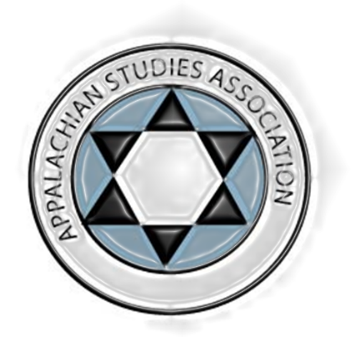Participation Type
Panel
Session Title
Session 7.06 (Stereotypes) Many Mountains, Many Misconceptions, Many Myths: Reinterpreting Early 20th Century Representations of the Region
Session Abstract or Summary
These presentations seek to re-examine depictions of the region that both shaped and reflected popular and professional conceptions of the mountains, and place these representations within their broader historical, cultural, and personal contexts. A number of these images have dominated the literature on media stereotyping and cultural intervention for the past three decades, but warrant a fresh perspective and closer scrutiny. Have we fully understood these representations, or appropriated them to our own ends? Have they limited or expanded our vision of the “many mountains” that make up this region? How do they continue to haunt our vision of the region’s potential in the 21st century? Penny Messenger explores popular media representations by those associated with the Conference of Southern Mountain Workers in the early 20th century. Philis Alvic reviews the work of three influential professional photographers whose work has had profound impact on popular understandings of the region and compares their perspectives with those of non-professionals. Joy Gritton examines the critical discourse surrounding the Doris Ulmann photographs published in Allen Eaton’s 1937 classic, Handicrafts of the Southern Highlands.
A Med Student in a Bonnet and a Rifle Maker in Heels: Revisiting Doris Ulmann
Presentation #1 Abstract or Summary
Between July of 1933 and her death in August of the following year, Doris Ulmann traveled the back roads of western North Carolina, northern Georgia, and eastern Kentucky and Tennessee photographing the region’s artisans for Allen Eaton’s Handicrafts of the Southern Highlands. Of the over 2,000 plates that she exposed during this period, 55 were selected for publication. Only two of these—depictions of the granddaughters of “Uncle William and Aunt Sal” Creech—have been the subject of focused analysis. The superficial treatment of this significant body of work has led to interpretations that question Ulmann’s integrity and cast a negative light on Eaton’s scholarship and advocacy. Previous scholarship, however, is not entirely supported by the visual or textual evidence. This presentation revisits the photos, examining them within broader cultural, historical, and aesthetic contexts.
At-A-Glance Bio- Presenter #1
Joy Gritton teaches art history at Morehead State University and coordinates the MSU Interdisciplinary Appalachian Studies Program and the Eastern Kentucky Arts Project. She is currently completing a book on Allen Eaton.
Presentation #2 Title
Early Images of Appalachia
Presentation #2 Abstract or Summary
Cameras were not common in the early years of the 20th century and were only in the hands of the wealthy or professionals. The early images of Appalachia that survive contribute to the current concept of what life was like. A few professional photographers did come into the mountains and their work has significantly influenced attitudes about that period. The soft focus of the Doris Ulmann posed figures gives a feeling of a quiet uncomplicated existence. Bayard Wootten images have an ethereal quality brought about by back-lighting her subjects. Although not the main concentration of his work, Lewis Hine turned his journalistic style of photography on certain mountain ventures. Contrasting these photographs with snapshots by non-professionals emphasizes how the personal vision of the professionals affected the presentation of their subjects. Was a false image conveyed or did the individual perspectives reflect an aspect of reality?
At-A-Glance Bio- Presenter #2
Philis Alvic is an artist and writer. She is the author of Weavers of the Southern Highlands (University Press of Kentucky, 2003) and over 100 articles in weaving, craft, and art magazines. She edited Crafts of Armenia (IESC/Armenia, 2003) as part of her international work as a crafts development consultant.
Presentation #3 Title
“Devoted to the Interest of the Appalachian Mountains”: Representing Appalachia in Early 20th Century Magazines
Presentation #3 Abstract or Summary
This paper assesses the representations of Appalachia in accounts (fact and fiction) published in early 20th century magazines by people associated with the Conference of Southern Mountain Workers (CSMW). In their own magazine, Mountain Life & Work (launched in 1925) and in accounts they published in other mass-circulation magazines, mountain workers characterized themselves as “devoted to the Interest of the Appalachian Mountains” (motto from the first issue of Mountain Life & Work). Those associated with the CSMW sought to counter negative and stereotypical portraits of the region with more nuanced representations that attempted to redefine the image of Appalachia and its residents in more positive ways and contested the prevalent image of shiftless and degraded “mountain whites.” Despite their emphasis on traits such as independence and self-reliance, however, mountain workers’ depictions of Appalachia also highlighted the need for outside intervention by mountain workers and others.
At-A-Glance Bio- Presenter #3
Penny Messinger teaches classes in American history, women’s history and women’s studies at Daemen College. Her current research focuses on the Conference of Southern Mountain Workers and on the impact of missionaries in Appalachia.
A Med Student in a Bonnet and a Rifle Maker in Heels: Revisiting Doris Ulmann
Between July of 1933 and her death in August of the following year, Doris Ulmann traveled the back roads of western North Carolina, northern Georgia, and eastern Kentucky and Tennessee photographing the region’s artisans for Allen Eaton’s Handicrafts of the Southern Highlands. Of the over 2,000 plates that she exposed during this period, 55 were selected for publication. Only two of these—depictions of the granddaughters of “Uncle William and Aunt Sal” Creech—have been the subject of focused analysis. The superficial treatment of this significant body of work has led to interpretations that question Ulmann’s integrity and cast a negative light on Eaton’s scholarship and advocacy. Previous scholarship, however, is not entirely supported by the visual or textual evidence. This presentation revisits the photos, examining them within broader cultural, historical, and aesthetic contexts.

